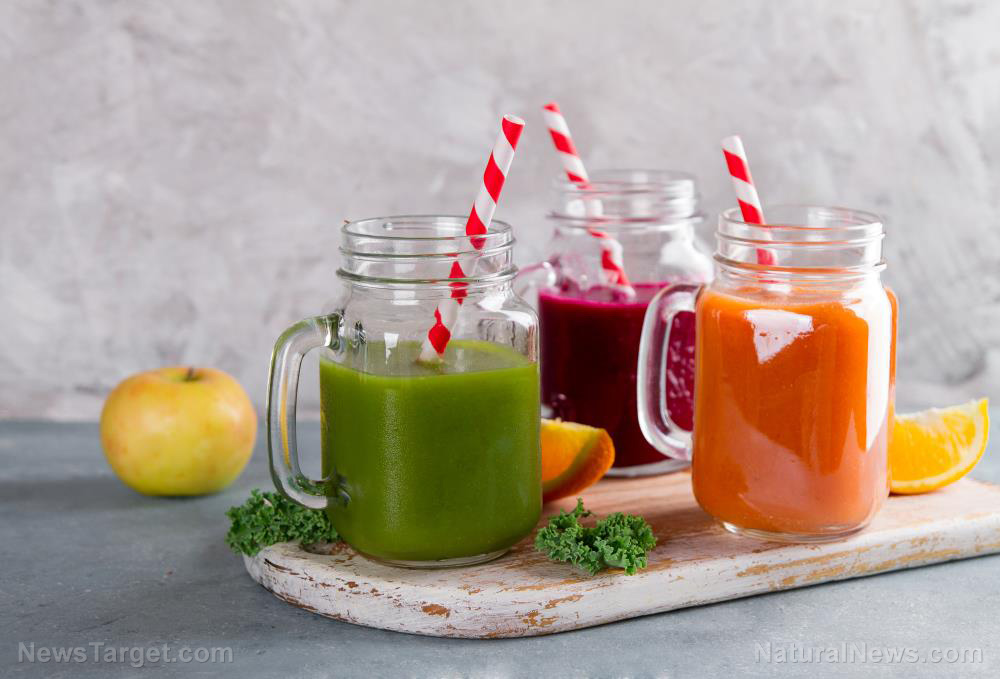
Cabbages are usually added to refreshing salads, but did you know that these cruciferous veggies can also be used to treat stomach ulcers?
What causes ulcers?
Ulcers are sores that develop in different parts of your body. Stomach ulcers (or gastric ulcers) are very common, and they form in the lining of the stomach.
Stomach ulcers usually form due to Helicobacter pylori infection, but other factors that disrupt the balance of your stomach’s environment can also cause ulcers. These include:
- Excess alcohol consumption
- Overuse of anti-inflammatory medications (e.g., aspirin and ibuprofen)
- Smoking
- Stress
 |
Discover how to prevent and reverse heart disease (and other cardio related events) with this free ebook: Written by popular Natural News writer Vicki Batt, this book includes everything you need to know about preventing heart disease, reversing hypertension, and nurturing your cardiac health without medication. Learn More. |
While there are medications that can relieve stomach ulcers, these drugs are linked to negative side effects, such as diarrhea and headaches.
To avoid these adverse effects, it is best to use natural remedies like the ones detailed below.
Cabbage juice
Cabbage is one of the most popular natural remedies for ulcers. This cruciferous vegetable is a great source of vitamin C, an antioxidant vitamin that helps prevent and treat H. pylori infections.
Vitamin C plays many important roles in your body. It also boosts your immunity.
Early research on the health benefits of cabbage reveal that fresh cabbage juice is more effective at healing stomach ulcers than conventional treatments.
In a separate study, researchers observed 13 participants with stomach and upper digestive tract ulcers who were given about a quart (946 mL) of fresh cabbage juice per day. They found that the volunteers’ ulcers healed after only seven to 10 days of treatment.
The researchers said that cabbage juice caused the ulcers to heal 3.5 to six times faster than ulcers treated with conventional medicines.
Here’s a simple cabbage juice recipe for healing stomach ulcers.
Ingredients:
- 1 small head of green cabbage
- 3 carrots
- 6 ribs of celery
- A 1-inch piece of ginger root
- Wash and cut the cabbage, carrots, celery and ginger root.
- Use a juicer to process the ingredients. Compared to a centrifugal juicer, a slow juicer will produce more juice.
Garlic
Garlic is a superfood with impressive antimicrobial and antibacterial properties.
Data from a study in the Avicenna Journal of Phytomedicine showed that consuming at least two cloves of raw garlic daily for about three days helped reduce bacterial activity in the stomach lining of volunteers with H. pylori infections.
Not all studies were able to reproduce these results, though. Experts believe that further studies are needed to determine the effectiveness of garlic in treating ulcers.
Honey
Honey isn’t just a natural alternative to sugar. It’s also an antioxidant-rich superfood that offers many benefits. For example, honey is said to boost eye health and helps lower your risk of cardiovascular disease, stroke and certain types of cancer.
Some studies have also reported that honey helps promote the healing of wounds and ulcers. Researchers posit that honey’s antibacterial properties can help fight H. pylori.
Licorice
The licorice used to treat stomach ulcers isn’t referring to the candy you can find in stores. Instead, home remedies make use of a spice called licorice, which is the dried root of the Glycyrrhiza glabra plant.
Licorice helps stimulate the stomach and intestines to produce more mucus. Mucus helps protect your stomach lining and hastens the healing of stomach ulcers. The extra mucus may also reduce ulcer-related pain.
According to studies, licorice contains compounds that can help prevent the growth of H. pylori.
If you’re not used to taking any of the remedies discussed above, consult your physician to check for possible drug interactions or allergic reactions. Licorice can interfere with certain medications and cause side effects like muscle pain or numbness in the extremities.
If you have an ulcer, try one of the natural remedies mentioned above to avoid the side effects of prescription medications.
Don’t smoke and drink, manage your stress levels and follow a balanced diet to lower your risk of developing painful stomach ulcers.
Sources:


















